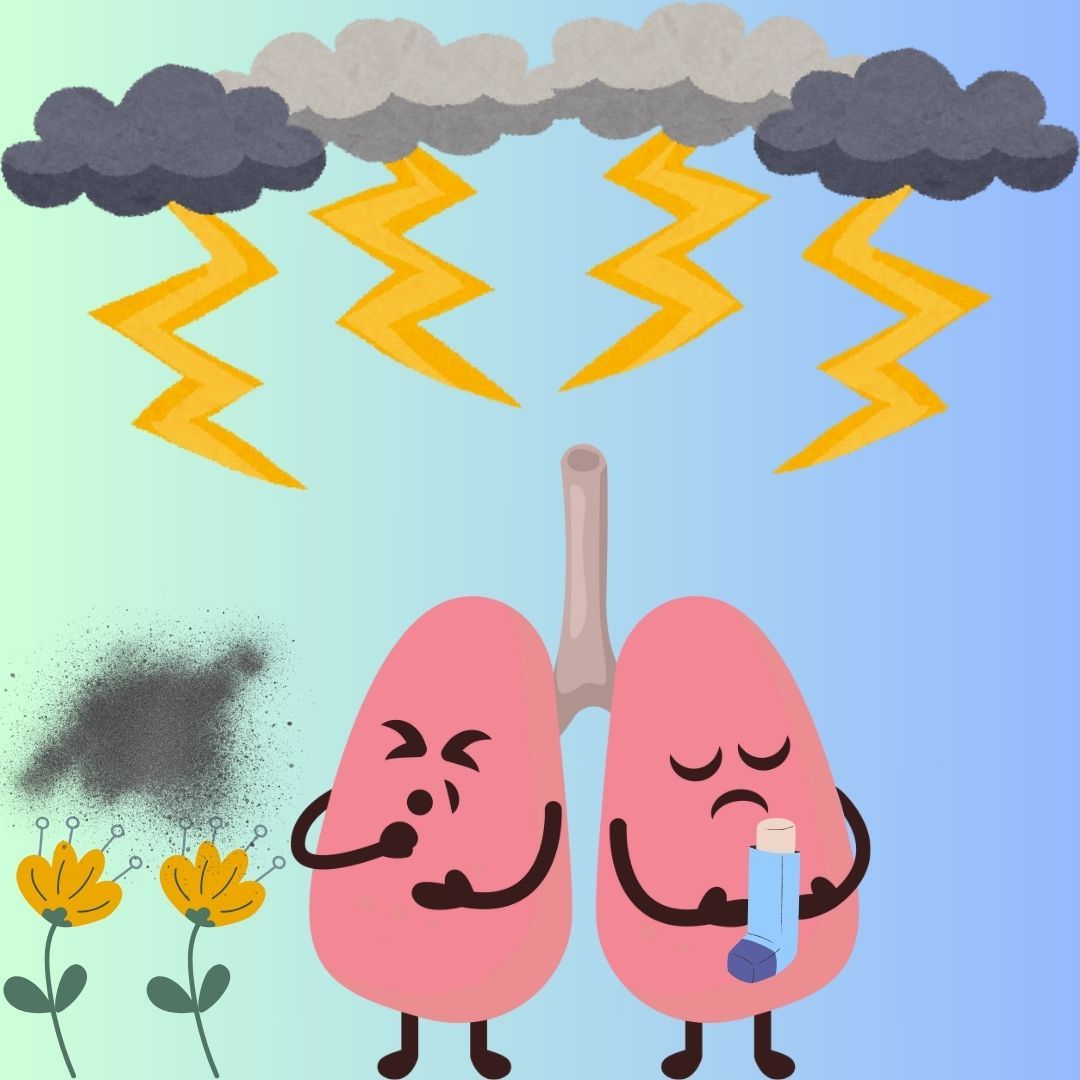- Center on Health Equity & Access
- Clinical
- Health Care Cost
- Health Care Delivery
- Insurance
- Policy
- Technology
- Value-Based Care
A Breathtaking Crisis, Part 2: Climate Change Worsens Asthma for Underserved Communities
Underserved communities, already facing higher asthma prevalence due to social determinants of health, are disproportionately affected by the impact climate change is having on asthma exacerbations. Potential solutions include education for patients and health care providers, climate litigation to establish environmental rights, and policy changes to curb climate change.
While asthma affects all races and ethnicities, it is important to acknowledge the greater impact this disorder has on underserved populations.
In the second and final part of this series installment by The American Journal of Managed Care® (AJMC®), we address racially charged policies like redlining and the associations it has to current climate displacement among underserved populations.
The first part of the series, titled “A Breathtaking Crisis, Part 1: Climate Change Worsens Asthma”, highlighted the impact climate change has on patients with asthma and how this has and will continue to grow worse overtime.
Part 2 shifts focus onto the direct impacts among underserved populations who are already at a higher risk for asthma. We will continue to investigate potential solutions to this global environmental and public health crisis.
Acute exacerbations of bronchial asthma can be caused by extreme climactic events like rain, storms, and wet weather conditions, potentially due to the dispersion of inhalable allergic particles from plant pollen through osmotic breakdown.

Climate Change Directly Affects Underserved Populations
Climate change disproportionately affects underserved populations compared with their counterparts. Global environmental climate change and urbanization go hand-in-hand with strong links between ambient air temperature, increased CO2 concentration, and influence on public health.
Similar to other facets of health care, asthma is more prevalent among underserved populations. Between 1976 through 1984, prevalence of childhood asthma was 6% among Black individuals, 5% among Cuban individuals, 11% among Puerto Rican individuals, and 3% among White and Mexican Americans individuals.1 In a study from 1993 to 1994, the asthma prevalence was 11% for Black individuals, 18% for Hispanic individuals, and 7% for White individuals.
By 2018, American Indian, Alaska Natives, and Black individuals had the highest asthma rates compared with other races and ethnicities.2 Across all racial and ethnic groups, Puerto Ricans had the highest current asthma rate at 14% from 2016 to 2018.
Historically, racial and ethnic minorities were more likely to live in urban regions through the encouragement of the Federal Housing Administration (FHA).3 The FHA promoted redlining between 1938 until the 1960s under the notion that housing loans were not economically sound if the land was in a predominately Black neighborhood. The FHA was known to favor loans where construction was in suburban areas rather than urban areas with older housing stocks and majority Black residents. Despite the FHA banning redlining in 1968, public and private redlining were fundamentally intertwined. Furthermore, the displacement and unequal placement of minorities in urban regions impacted existing generations, along with those to come.
Combined with redlining, policies on multiple legislative levels affected where schools, highways, and toxic hazards were disposed which has left behind a patchwork legacy of security maps and segregation across cities in the US.4 These communities have historically higher levels of industrial pollution and, in turn, are more likely to be identified as medically underserved. Asthma exacerbations in association with redlining have resulted in neighborhood-level asthma-related exposures like air pollution. Additionally, the intergenerational relationships that exist between socioeconomic status and psychosocial stress with asthma may consider redlining as a major influence for the health of future generations.
“The Allergy and Asthma Network's Asthma Equity Explorer database can look at asthma prevalence and social determinants of health or environmental factors within location and geography," De De Gardner, DrPH, RRT, RRT-NPS, operating as chief research officer at the Research, Allergy and Asthma Network in Virginia said in an interview with AJMC®. "Using the database, we can look at asthma prevalence, environmental triggers, census tracks, and for some census tracks, the historical redlining, also called structural racism, that has contributed to poor asthma health outcomes in Black individuals diagnosed with asthma.”
Urban minority communities have a higher risk of asthma due to historical displacement and ongoing industrialization. Climate change, worsened by these factors, will further affect people with asthma.
Potential Solutions
It is not guaranteed climate litigation will always have standing in court and merely depends on the region, case argument, and laws in place.| Image Credit: VectorMine - stock.adobe.com

There is no single solution that will work for every patient with asthma affected by climate change. The issue calls for a multifaceted approach, considering various potential options.
Further educating underserved populations on climate change will allow space for more conversation between health care professionals and patients with asthma. In June 2019, The American Medical Association implemented a resolution that advocated for the inclusion of climate change and health in medical education.5 The framework focuses on 3 domains, knowledge of climate change and effects on health, climate change-related adaptations for clinical practice, and implications of climate change for health care delivery.
“If we're not including all people at the table at the beginning of the studies, then how can we have generalizable results that would be meaningful for the people who are going to be utilizing the medication or utilizing the devices?” Gardner asked.
It is important for both patients and physicians to be aware of the effects climate change has on asthma so both populations are better prepared. Since climate change and the effects are complex issues with multiple moving parts, consistent education stemming for both physicians and patients is critical to address issues and move forward.
Another avenue to consider would be a form of climate litigation, a way of recognizing climate change as a health emergency that impacts vulnerable populations, creating a public health issue.6
Since July 2022, the United Nations (UN) recognized the human right to a clean, healthy, and sustainable environment.7 The idea is to reduce inequalities and vulnerabilities to the impacts of climate change and the degradation of nature while navigating an environmentally sustainable economy and society for all beings.
As a result of the UN’s recognition, there have been movements to hold governments accountable. For instance, in Switzerland, a group of more than 2500 women sued the government for its inadequate efforts to combat climate change, putting them at risk of dying during a heat wave.8 One 80-year-old woman with asthma made the argument that she was at greater risk of dying during a heat wave's severe temperatures. The European Court of Human Rights ruled the case in favor of the group of older Swiss women, making it possible for the federal government to take more action on reducing emissions.
“Montana, New York, and Pennsylvania have, at the state level, passed some sort of legislation that establishes the right to a healthy environment, but that's only 3 states," Narayan Toolan, LLB, LLM, an independent lawyer focused on climate justice, said in an interview with AJMC. "At the federal level in the US, and in most US states, this right does not exist. There are a couple of other states like Hawaii, Rhode Island, Illinois, and Massachusetts, that do have some constitution protection for the right to healthy environment, but not in the Bill of Rights.”
This makes prosecution in the US based on climate change difficult since only some states uphold laws surrounding the issue. Oftentimes when the states do have laws of protection, the case must focus on certain grounds to remain justified in a court of law. For example, Held v State of Montana argued the youth have rights to a safe climate, teetering on the ground of child endangerment.9 About 16 Montana youth, aged 5 through 22 years, were granted ruling that they had a right to a clean and healthful environment and declared the government actions promoting fossil fuels were endangering the well-being of adolescents. The case was supported by Montana’s estimated 32 million metric tons of CO2 released into the air just in 2019, comparable with entire nations like Ecuador, Ireland, New Zealand, Norway, Sweden, and Switzerland.
The court ruled to recognize additional emissions of greenhouse gases that worsen climate impacts, the dangers of irreversible climate injuries from emissions, and the necessity of science-based measures to combat climate change.
It is not guaranteed climate litigation will always have standing in court and merely depends on the region, case argument, and laws in place. However, it is a step in the direction towards clean air for patients with asthma and reducing exacerbations of climate change to decrease the severity of their symptoms.
“I think it's difficult to get satisfactory relief because it does come down to this systemic problem," Toolan said. "It doesn't seem like either governments individually, or courts individually, or corporations individually, are able to respond at some level.”
Toolan does suggest an “eco-centric” approach to law where human-centered legal systems are challenged to value non-human life.6 An eco-centric lens supports the idea that nature deserves protection, intergenerational and intragenerational equity, and cultural values. With climate litigation focused on eco-centric approaches, legal doctrines will have an enhanced sense of credibility regarding public health and could ensure climate litigation has positive implications for public health.
While there's no single solution; a multipronged approach is crucial. Public awareness, legal action, and policy changes are all necessary to combat climate change and safeguard the health of vulnerable populations, particularly those suffering from asthma.
References
1. Ethnic disparities in the burden and treatment of asthma. Asthma community network. The National Pharmaceutical Council. January 2005. Accessed June 6, 2024. https://www.asthmacommunitynetwork.org/node/1511
2. Current asthma demographics. American Lung Association. Published July 6, 2020. Accessed June 20, 2024. https://www.lung.org/research/trends-in-lung-disease/asthma-trends-brief/current-demographics
3. Redlining. Federal Reserve History. June 2, 2023. Accessed June 21, 2024. https://www.federalreservehistory.org/essays/redlining#:~:text=Historically%2C%20mortgage%20lenders%20once%20widely
4. Nardone A, Casey JA, Morello-Frosch R, Mujahid M, Balmes JR, Thakur N. Associations between historical residential redlining and current age-adjusted rates of emergency department visits due to asthma across eight cities in California: An ecological study. Lancet Planet Health. 2020;964(1):e24-e31. doi:10.1016/S2542-5196(19)30241-4
5. Philipsborn RP, Sheffield P, White A, Osta A, Anderson MS, Bernstein A. Climate change and the practice of medicine. Academic Medicine. 2021;96(3):355-367. doi:10.1097/acm.0000000000003719
6. Toolan N, Marcus H, Hanna EG, Wannous C. Legal implications of the climate-health crisis: A case study analysis of the role of public health in climate litigation. PloS one. 2022;17(6):e0268633. doi:10.1371/journal.pone.0268633
7. U.S. Government Accountability Office. Reported Status of Department of Defense's Enterprise Resource Planning Systems. 2012. GAO-12-565R. Accessed April 2, 2012. http://www.gao.gov/products/GAO-12-565R
8. KlimaSeniorinnen: Meet the older women suing Switzerland to demand climate action. Reuters. April 9, 2024. Accessed June 21, 2024. https://www.reuters.com/world/europe/who-are-elderly-swiss-women-behind-landmark-climate-court-case-win-2024-04-09/
9. Youth wins climate case against U.S. state of Montana in first-of-its-kind legal ruling. Mongabay Environmental News. Published August 14, 2023. Accessed June 23, 2024. https://news.mongabay.com/2023/08/first-of-its-kind-legal-ruling-favors-youth-in-montana-climate-case/#:~:text=A%20historic%20ruling%20established%20that
Trends in Hospital Pricing for Vulnerable Emergency Department Users, 2021-2023
December 4th 2025Self-pay emergency department prices rose significantly from 2021 to 2023, especially at for-profit and system-affiliated hospitals, highlighting growing affordability challenges for uninsured and underinsured patients.
Read More
